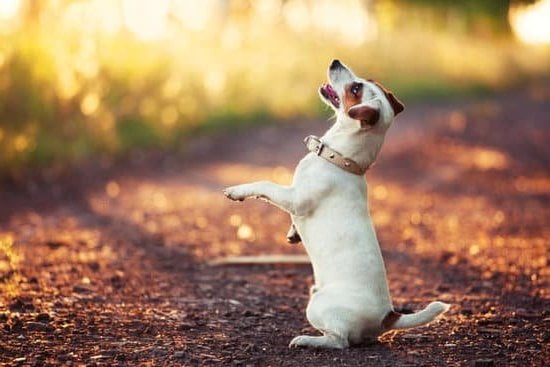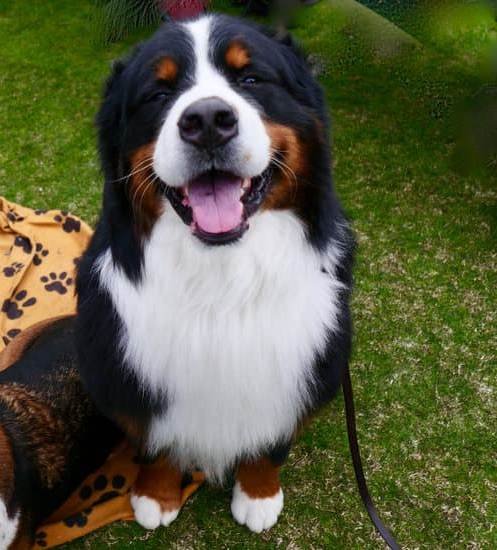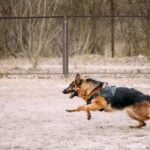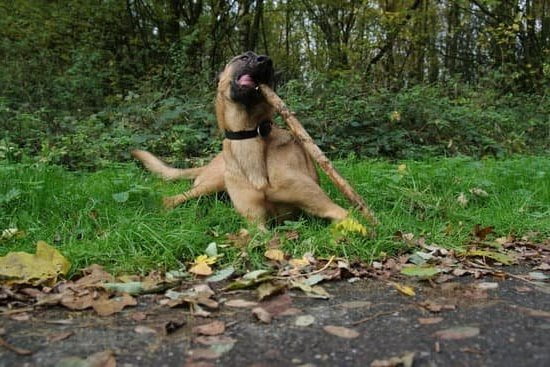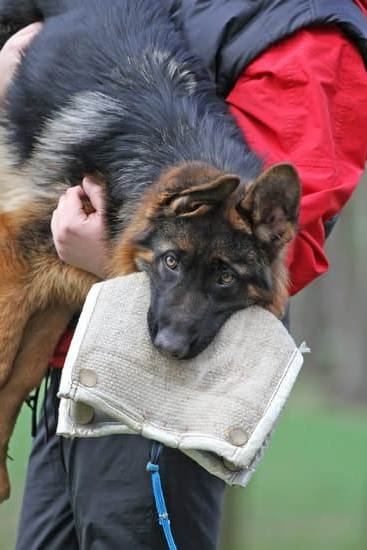Are you wondering how to train a dog aggression? It can be a challenging and sometimes daunting task, but with the right techniques and understanding, it is possible to manage and even reduce aggressive behavior in your pet. In this article, we will explore the basics of dog aggression, identify the root causes of this behavior, and provide effective training techniques to address and manage aggression in your beloved canine companion.
Understanding dog aggression is crucial for any pet owner. Dogs may exhibit aggression towards other animals or people for various reasons, and it’s important to recognize the signs and triggers of aggressive behavior. By gaining insight into what causes aggression in dogs, you can begin to address the problem effectively.
Identifying the root cause of your dog’s aggression is the first step towards finding a solution. Whether it’s fear-based, territorial, possessive, or redirected aggression, each type requires a different approach in training.
With the right techniques and understanding, managing aggressive behavior in your dog is not only possible but also beneficial for both you and your pet. So let’s dive into the basics of understanding dog aggression and learn how to train our furry friends to be well-behaved companions.
Identifying the Root Cause of Your Dog’s Aggression
In order to effectively address your dog’s aggression, it is crucial to identify the root cause of this behavior. There are various factors that can contribute to a dog’s aggression, including fear, possessiveness, territoriality, or even medical issues. It is important to observe your dog’s body language and behavior in different situations to determine what triggers their aggression.
One common cause of aggression in dogs is fear. Dogs may become aggressive when they feel threatened or cornered, especially if they have not been properly socialized or have had negative experiences in the past. Possessive or territorial aggression can also be triggered when a dog feels the need to protect its resources such as food, toys, or sleeping areas.
It is also essential to rule out any underlying medical issues that could be causing your dog’s aggressive behavior. Pain or discomfort due to an illness or injury can lead to heightened irritability and aggression in dogs.
A thorough examination by a veterinarian can help determine if there are any physical reasons for your dog’s aggression. Understanding the specific triggers for your dog’s aggressive behavior will help you develop a targeted training plan to address and manage their aggression effectively.
| Root Cause of Aggression | Common Triggers |
|---|---|
| Fear | Feeling threatened or cornered |
| Possessiveness/Territoriality | Protecting resources such as food, toys, or sleeping areas |
| Medical Issues | Pain/discomfort due to illness or injury |
Training Techniques for Managing Aggressive Behavior
When dealing with a dog showing signs of aggression, it’s crucial to utilize proper training techniques to manage their behavior. One effective method is desensitization and counter-conditioning, which involves gradually exposing the dog to the trigger that causes aggression while pairing it with something positive, such as treats or play. This can help change the dog’s emotional response to the trigger over time.
Another helpful technique is implementing obedience training. Teaching your dog basic commands like “sit,” “stay,” and “leave it” can provide a way for you to redirect their focus when they start to exhibit aggressive behavior. Consistency and positive reinforcement are key in this training method – rewarding your dog for following commands will encourage good behavior.
It’s also important to avoid punishment-based training methods, as these can escalate aggression in some dogs. Instead, focus on rewarding and reinforcing calm, non-aggressive behavior. By providing a safe and positive environment for your pet, you can make great strides in managing their aggressive tendencies.
| Training Technique | Description |
|---|---|
| Desensitization and Counter-Conditioning | Gradually expose the dog to triggers while pairing with something positive. |
| Obedience Training | Teach basic commands like “sit,” “stay,” and “leave it” for redirection. |
| Positive Reinforcement | Avoid punishment-based methods and focus on rewarding calm behavior. |
Using Positive Reinforcement to Address Aggression
When dealing with a dog’s aggressive behavior, positive reinforcement can be a highly effective approach in addressing and modifying their actions. Positive reinforcement involves rewarding your dog for exhibiting the desired behavior, which can help in reducing their aggressive tendencies over time.
Here are some techniques and tactics that you can use when implementing positive reinforcement training to address aggression in dogs:
– **Clicker Training**: Utilizing a clicker along with treats to mark and reward good behavior can be an effective way to reinforce non-aggressive actions.
– **Desensitization**: Gradually exposing your dog to the trigger of their aggression in a controlled environment while providing positive experiences and rewards can help them associate the trigger with positivity rather than aggression.
– **Counter-Conditioning**: Changing your dog’s emotional response to the trigger of their aggression by pairing it with something positive, such as treats or playtime, can help in reducing their aggressive reactions.
Consistency is key when using positive reinforcement to address aggression. It’s important to establish clear expectations for your dog’s behavior and consistently reward them for displaying non-aggressive actions. This will help in reinforcing the desired behavior and promoting a more positive relationship between you and your pet.
The Importance of Consistency in Training
Consistency is key when it comes to training a dog with aggression issues. It is important to maintain a consistent approach in addressing and managing your dog’s aggressive behavior. This consistency should be applied in various aspects of training, from basic commands to behavioral modifications.
Here are some ways to ensure consistency in training your dog’s aggression:
- Use the same verbal cues and hand signals consistently when giving commands or redirecting aggressive behavior.
- Establish consistent rules and boundaries for your dog, and make sure that all family members or anyone interacting with the dog follows these rules.
- Stick to a consistent routine for feeding, exercise, playtime, and training sessions. Dogs thrive on routine and predictability, which can help reduce stress and anxiety-related aggression.
Consistency provides stability for dogs and helps them understand what is expected of them. By being consistent in your approach to training an aggressive dog, you can effectively communicate boundaries and expectations, ultimately helping the dog feel more secure and less likely to exhibit aggressive behavior. Remember that patience is crucial as changing behavior takes time, so stay committed to being consistent in your training efforts.
Seeking Professional Help
Signs That Professional Help Is Needed
When dealing with a dog exhibiting aggressive behavior, it’s important to know when to seek the help of a professional trainer or behaviorist. Signs that indicate the need for professional assistance include persistent and severe aggression, aggression towards family members, aggression towards strangers, and aggression that escalates over time. Additionally, if the dog has a history of inflicting serious injury or has difficulty responding to training techniques, it may be time to bring in a professional.
The Role of a Trainer
A professional dog trainer can offer guidance on how to manage and modify aggressive behavior in your dog. They will observe your dog’s behavior, assess the root cause of the aggression, and develop a personalized training plan. A trainer can also provide support and teach you how to properly execute training techniques to address your dog’s aggressive tendencies.
When to Consult With a Behaviorist
In more complex cases of aggression, it may be necessary to consult with a certified animal behaviorist. These professionals have extensive knowledge in animal behavior and psychology, allowing them to accurately diagnose and treat underlying issues contributing to the aggression.
A behaviorist can recommend specific behavior modification strategies tailored to your dog’s individual needs, as well as provide guidance on creating an environment that supports positive behavioral changes. If traditional training methods have been ineffective in addressing your dog’s aggression, consulting with a certified animal behaviorist is essential for the well-being of your pet and those around them.
Implementing Exercise and Mental Stimulation to Reduce Aggression
The Role of Exercise in Reducing Aggression
Regular exercise is an essential component in managing a dog’s aggressive behavior. Dogs, like humans, need physical activity to maintain good physical health and mental well-being. Adequate exercise helps reduce stress, anxiety, and pent-up energy that can contribute to aggressive tendencies. Activities such as brisk walks, running, playing fetch, or engaging in agility exercises can help alleviate built-up tension and promote relaxation in dogs.
Mental Stimulation for Aggression Management
In addition to physical exercise, mental stimulation is crucial in reducing aggression in dogs. Providing mental challenges through interactive toys, puzzle feeders, obedience training sessions, or scent work engages a dog’s cognitive abilities and keeps their mind occupied. A mentally stimulated dog is less likely to display destructive or aggressive behaviors as they are focused on problem-solving tasks rather than negative impulses.
Establishing a Routine for Exercise and Mental Stimulation
Consistency is key when implementing exercise and mental stimulation to reduce aggression in your dog. Creating a daily routine that includes designated times for physical activity and brain-teasing games helps promote a sense of stability for your pet. Consistent engagement in exercise and mental stimulation also reinforces positive behaviors while decreasing the likelihood of aggressive outbursts. By providing structure and regular mental challenges, you can effectively minimize your dog’s aggressive tendencies over time.
Creating a Safe Environment for Your Aggressive Dog
Creating a safe environment for an aggressive dog is essential to ensure the safety of both the dog and those around them. One of the first steps in creating a safe environment is to identify triggers that may cause aggression in your dog. This could be certain people, animals, objects, or situations. Once you have identified these triggers, it’s important to eliminate or minimize exposure to them as much as possible.
It’s also crucial to provide proper containment for your aggressive dog to prevent any potentially dangerous situations. This may include using a secure fence in your yard or keeping your dog on a leash and harness during walks. Additionally, providing a comfortable and safe space within your home where your dog can retreat to when feeling stressed or overwhelmed is important.
Another aspect of creating a safe environment for an aggressive dog is ensuring that they are not put in situations where they feel threatened or anxious. This means being mindful of their interactions with other pets and people, and avoiding confrontation whenever possible. It’s also important to train family members and visitors on how to best interact with an aggressive dog to avoid any unintentional triggering situations.
Understanding Legal Responsibilities as a Dog Owner With an Aggressive Pet
As a dog owner with an aggressive pet, it is important to understand your legal responsibilities. When a dog displays aggressive behavior towards other pets or people, the owner can be held liable for any damages or injuries caused by their pet. This means that if your dog injures another person or animal, you could be facing legal consequences. It is crucial to familiarize yourself with the laws and regulations in your area regarding aggressive dogs.
In many places, there are specific laws related to owning an aggressive dog. Some jurisdictions require owners of aggressive dogs to have special insurance or to follow certain restrictions when walking their pets in public places. Additionally, some areas may have breed-specific legislation that targets certain types of dogs that are deemed to be more prone to aggression. Understanding and complying with these legal requirements is essential for responsible dog ownership.
Another important legal responsibility as a dog owner with an aggressive pet is properly managing and supervising your dog. This includes keeping your aggressive dog contained within a secure and appropriate enclosure when not under direct control.
Failing to take the necessary precautions to prevent your dog from causing harm to others can result in serious legal repercussions. By understanding and fulfilling your legal obligations as a dog owner with an aggressive pet, you can help ensure the safety of others while also protecting yourself from potential legal issues.
Addressing Aggression Towards Other Pets or People
In conclusion, addressing aggression in dogs is a complex and ongoing process that requires patience, understanding, and the right training techniques. It is essential to first understand the root cause of your dog’s aggression before implementing any training methods. Identifying triggers and behavior patterns can help in developing a tailored approach to managing aggressive behavior.
Using positive reinforcement and consistency in training are crucial components when working with an aggressive dog. Rewarding good behavior and providing clear boundaries can help in reshaping your dog’s response to triggering situations. Seeking professional help from a trainer or behaviorist may also be necessary, especially when dealing with severe aggression issues.
Additionally, creating a safe environment for your aggressive dog, implementing regular exercise and mental stimulation, and understanding legal responsibilities as a dog owner are all important aspects of managing aggression. It is also vital to address any aggression towards other pets or people promptly, as it poses a risk to their safety. With the right approach and dedication, it is possible to work towards reducing aggression in dogs and fostering a harmonious relationship between pets and their owners.
Frequently Asked Questions
Can Aggression Be Trained Out of a Dog?
Aggression in dogs can be addressed and managed through proper training and behavior modification. While some breeds may have a predisposition towards aggression, it is still possible to train this behavior out of them with the help of a professional dog trainer or animal behaviorist.
Consistent and positive reinforcement training methods can help redirect the dog’s aggressive tendencies and promote calm and non-aggressive behavior.
How Do I Stop a Dog From Being Aggressive?
Stopping a dog from being aggressive involves identifying the root cause of the aggression, whether it’s fear, territoriality, possessiveness, or other triggers. Once the triggers are identified, it’s important to remove or minimize exposure to these triggers while implementing a training plan that focuses on positive reinforcement and desensitization.
Additionally, seeking professional help from a certified dog trainer or behaviorist can provide guidance on specific techniques to address aggression in your dog.
Can You Train an Aggressive Dog to Be Friendly?
It is possible to train an aggressive dog to be friendly with the right approach and consistency. This typically involves reconditioning the dog’s response to certain stimuli through positive reinforcement techniques such as rewards for calm behavior around those stimuli.
In some cases, professional intervention may be necessary to successfully train an aggressive dog to be friendly, especially if the aggression is severe or deeply rooted. With patience, dedication, and appropriate training methods, many aggressive dogs can transition to become friendlier and more sociable pets.

Welcome to the blog! I am a professional dog trainer and have been working with dogs for many years. In this blog, I will be discussing various topics related to dog training, including tips, tricks, and advice. I hope you find this information helpful and informative. Thanks for reading!

